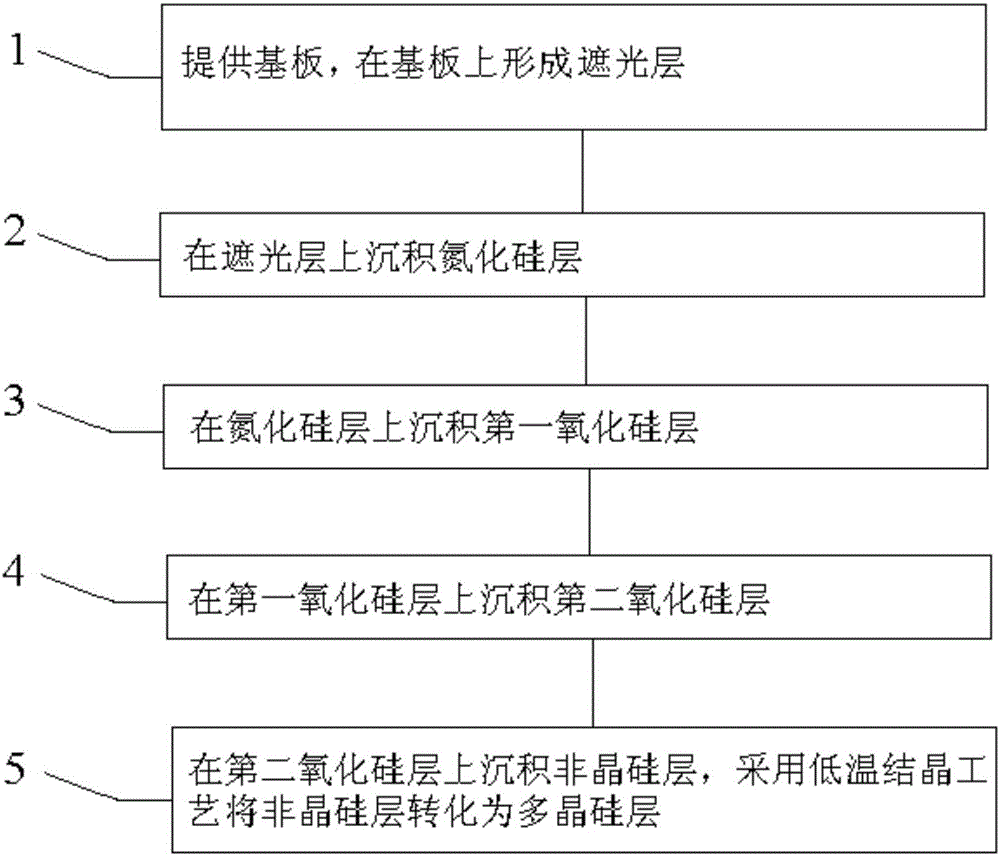Preparation method of low temperature polysilicon film
A low-temperature polysilicon and polysilicon layer technology, applied in semiconductor/solid-state device manufacturing, electrical components, circuits, etc., can solve the problems affecting the electrical performance of the device, the offset of the flat-band voltage Vfb, and the reduction of the silicon channel current, so as to improve the current carrying capacity. effect of sub-migration speed, reduction of channel current loss, and reduction of heat loss
- Summary
- Abstract
- Description
- Claims
- Application Information
AI Technical Summary
Problems solved by technology
Method used
Image
Examples
Embodiment Construction
[0046] The following will clearly and completely describe the technical solutions in the embodiments of the present invention with reference to the accompanying drawings in the embodiments of the present invention. Obviously, the described embodiments are only some, not all, embodiments of the present invention. Based on the embodiments of the present invention, all other embodiments obtained by persons of ordinary skill in the art without making creative efforts belong to the protection scope of the present invention.
[0047] as per figure 1 The process shown in the preparation of low-temperature polysilicon thin film includes the following steps:
[0048] providing a substrate, and forming a light-shielding layer on the substrate;
[0049] Depositing a silicon nitride layer on the light shielding layer;
[0050] depositing a first silicon oxide layer on the silicon nitride layer;
[0051] depositing a second silicon oxide layer on the first silicon oxide layer;
[0052]...
PUM
 Login to View More
Login to View More Abstract
Description
Claims
Application Information
 Login to View More
Login to View More - R&D
- Intellectual Property
- Life Sciences
- Materials
- Tech Scout
- Unparalleled Data Quality
- Higher Quality Content
- 60% Fewer Hallucinations
Browse by: Latest US Patents, China's latest patents, Technical Efficacy Thesaurus, Application Domain, Technology Topic, Popular Technical Reports.
© 2025 PatSnap. All rights reserved.Legal|Privacy policy|Modern Slavery Act Transparency Statement|Sitemap|About US| Contact US: help@patsnap.com



